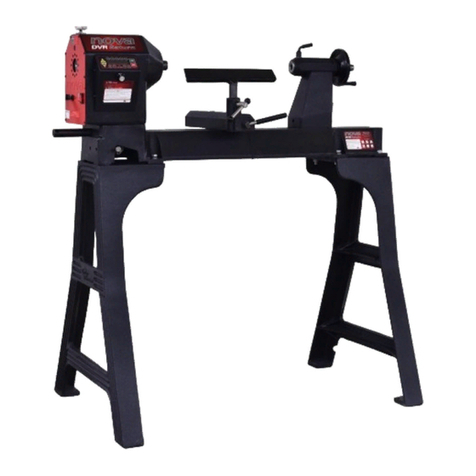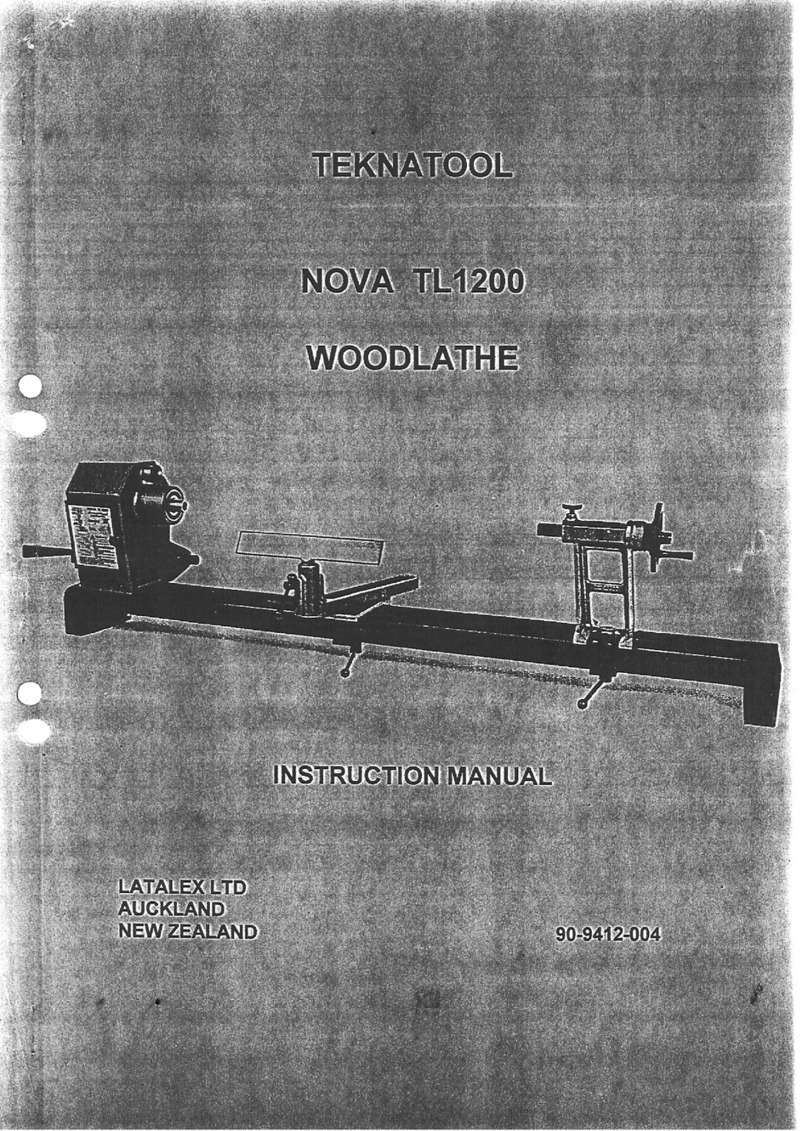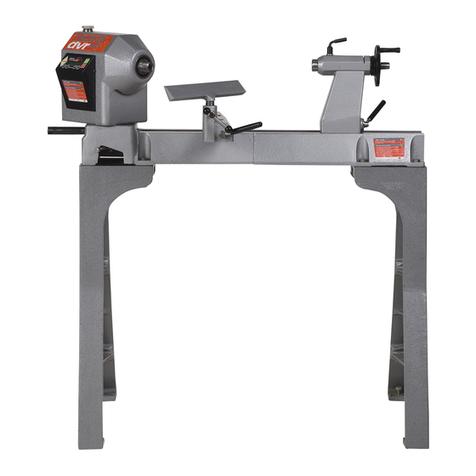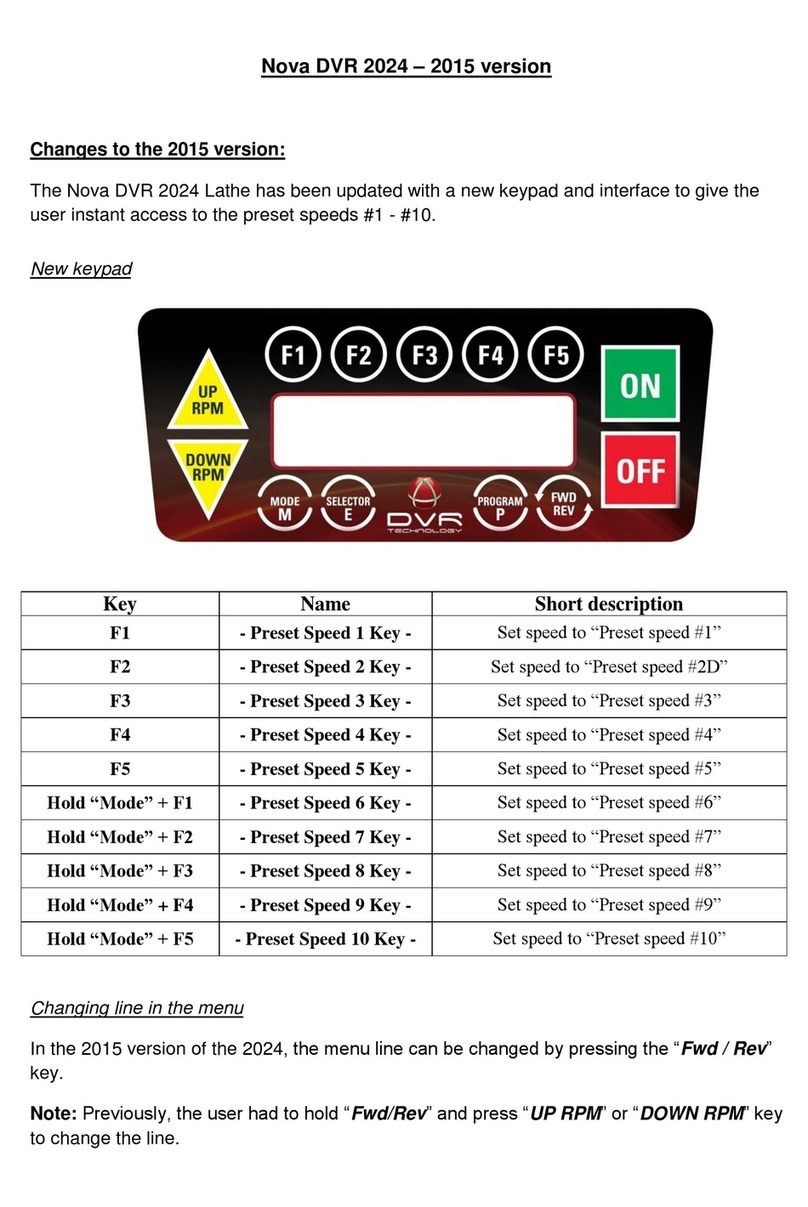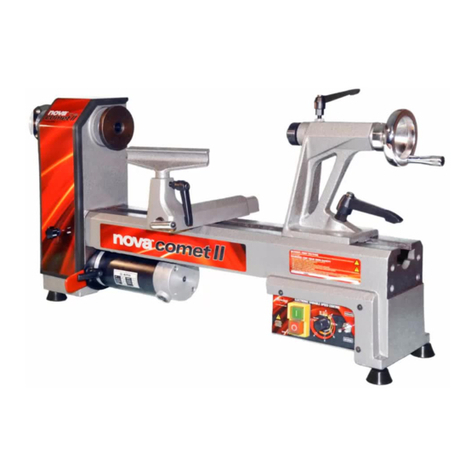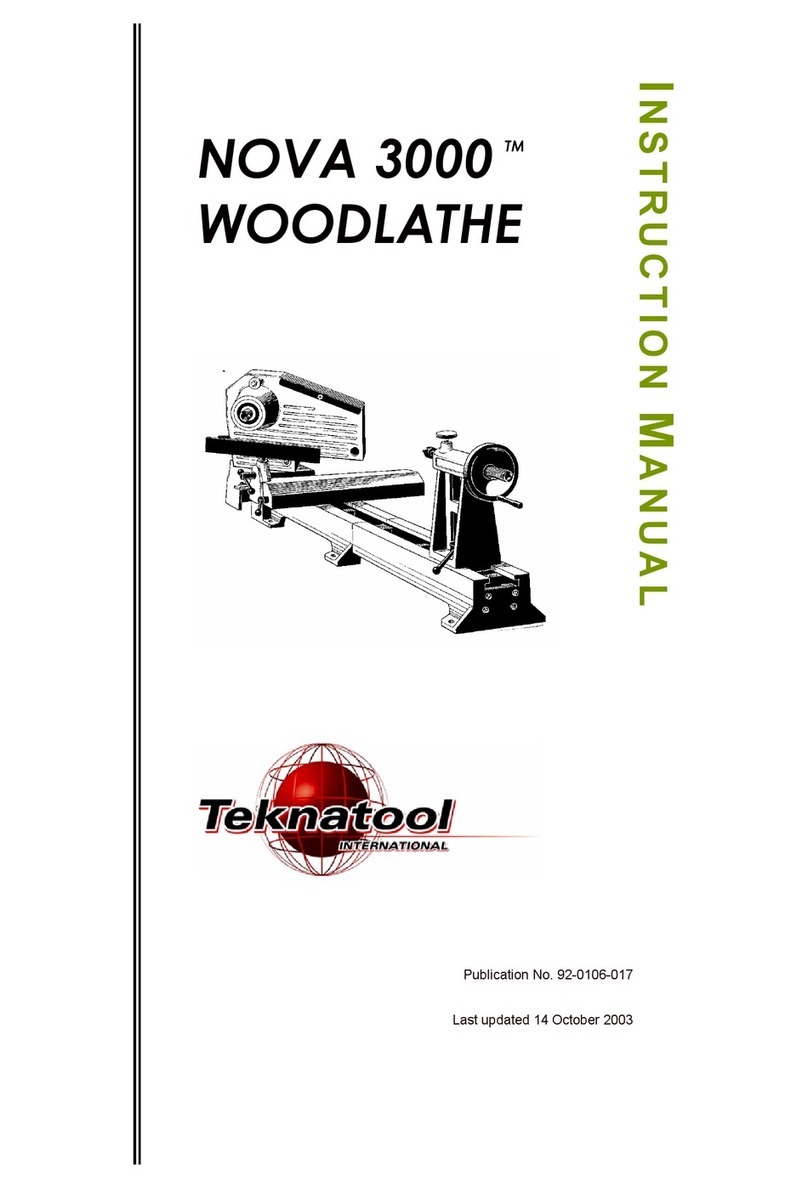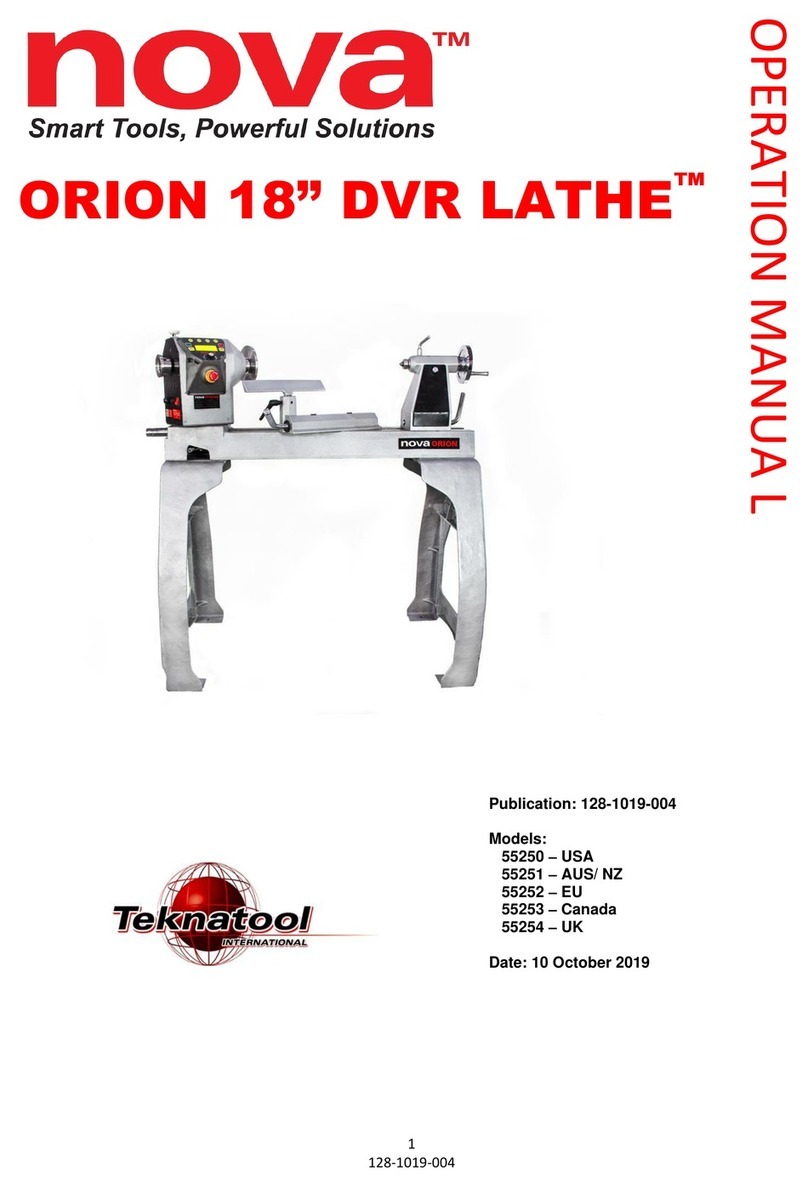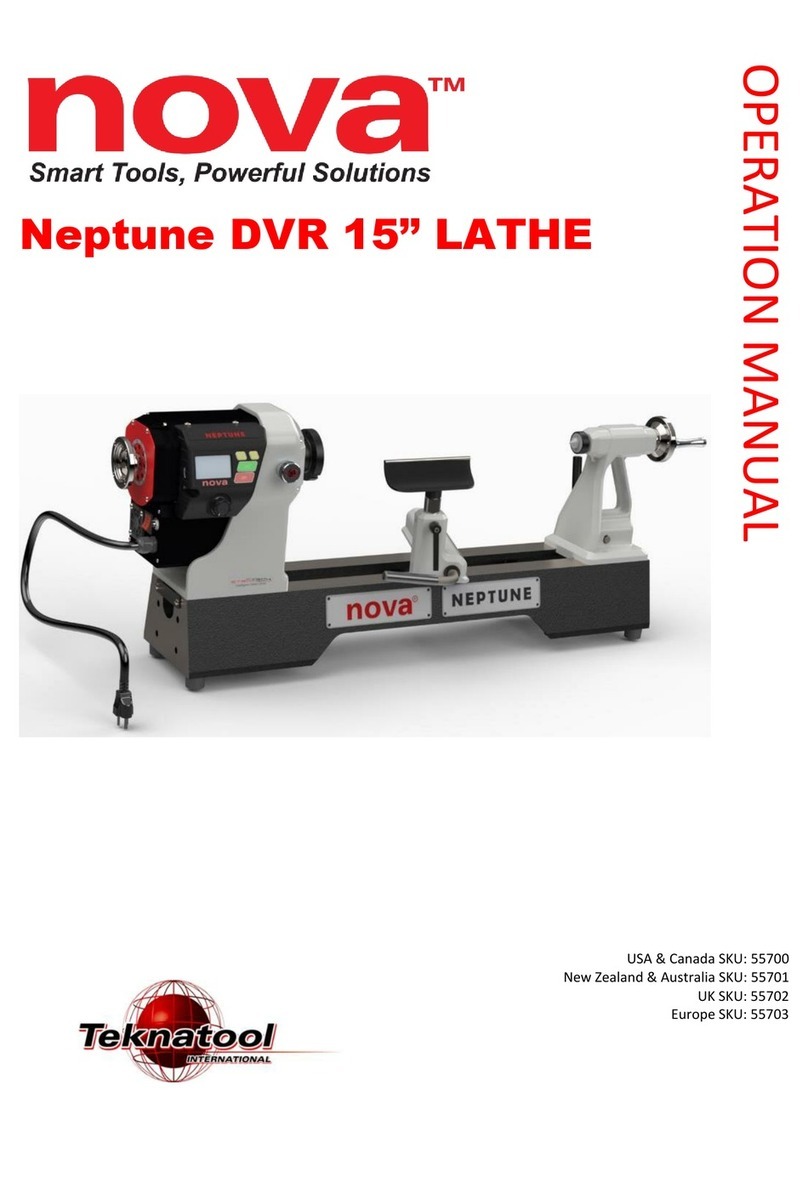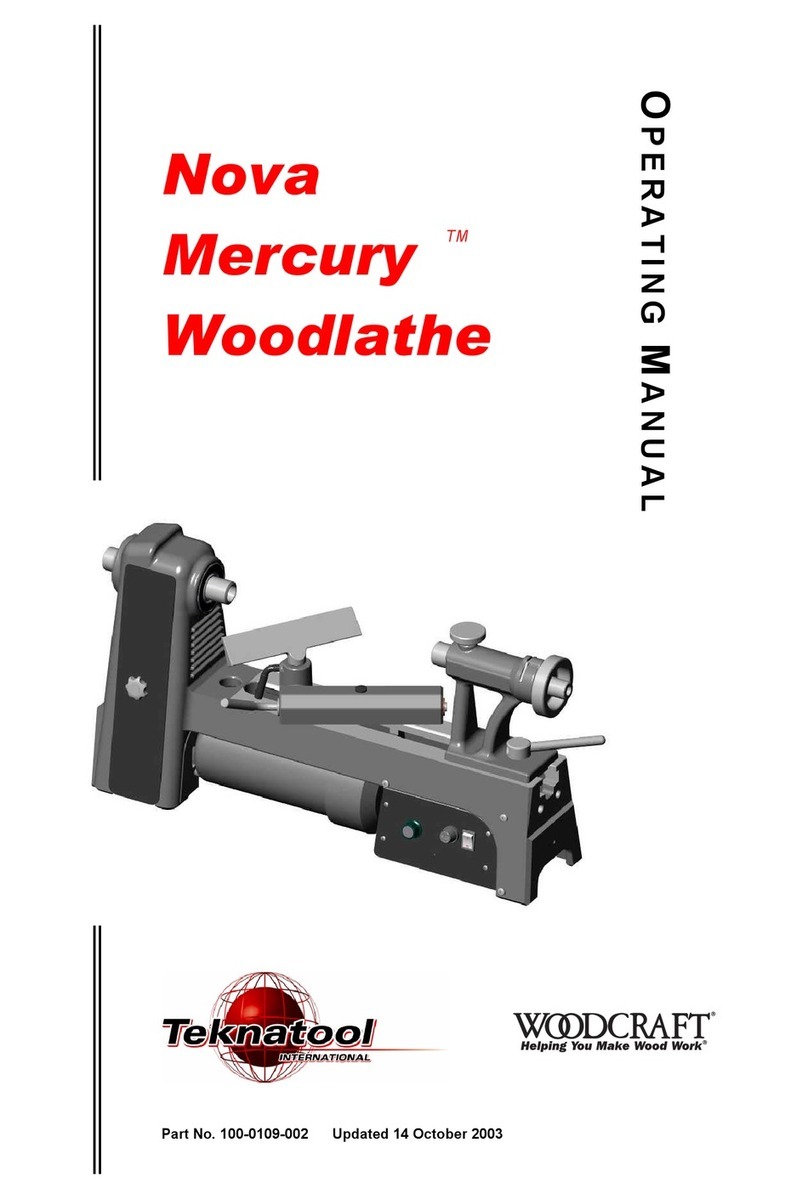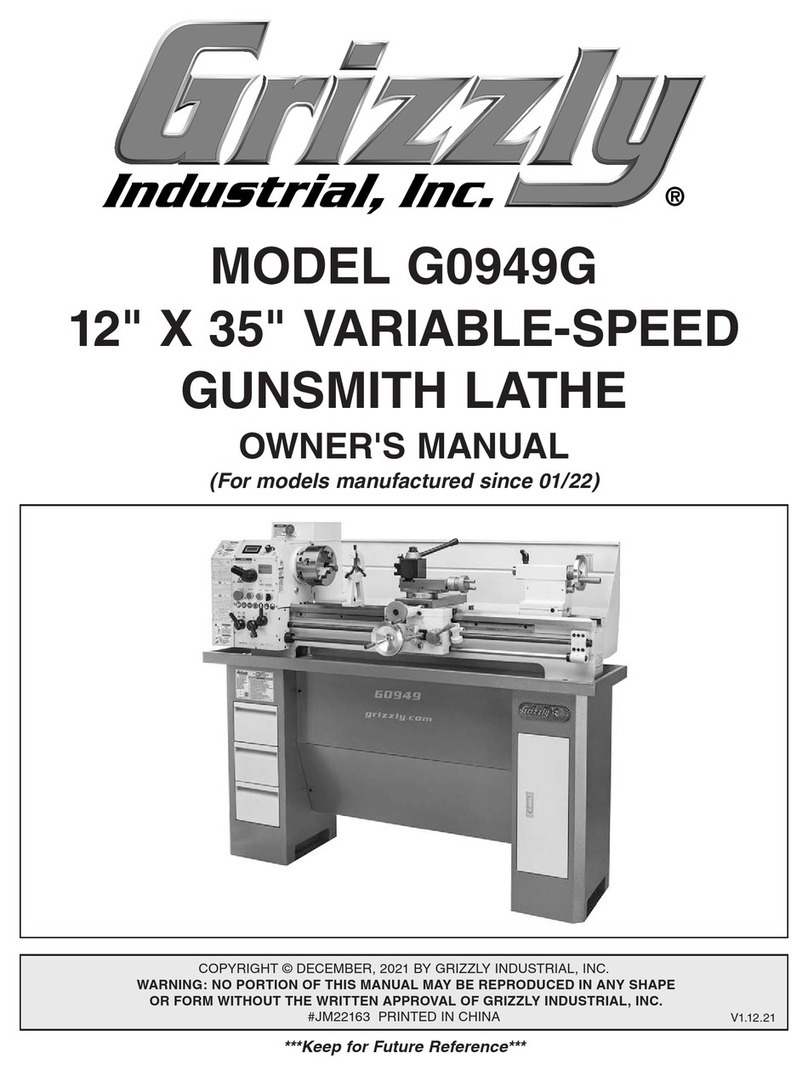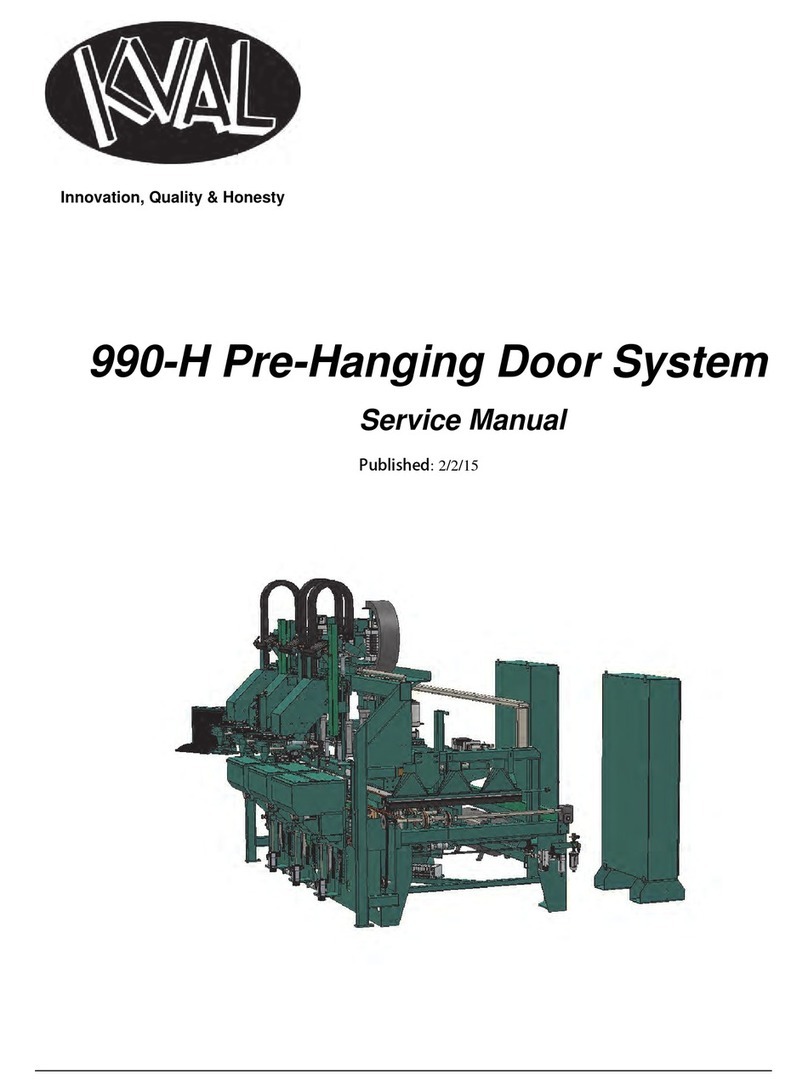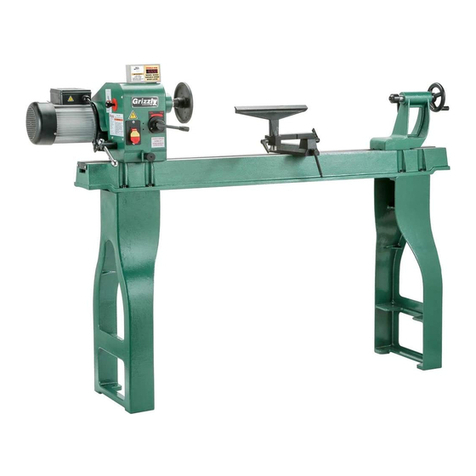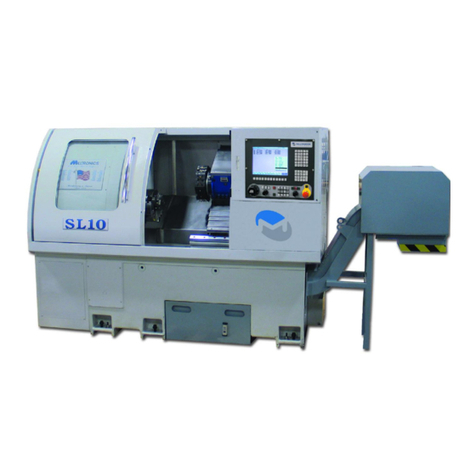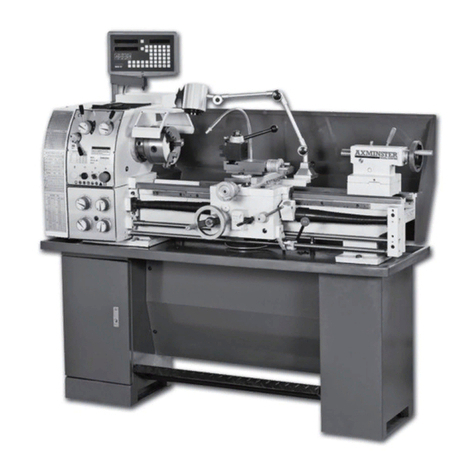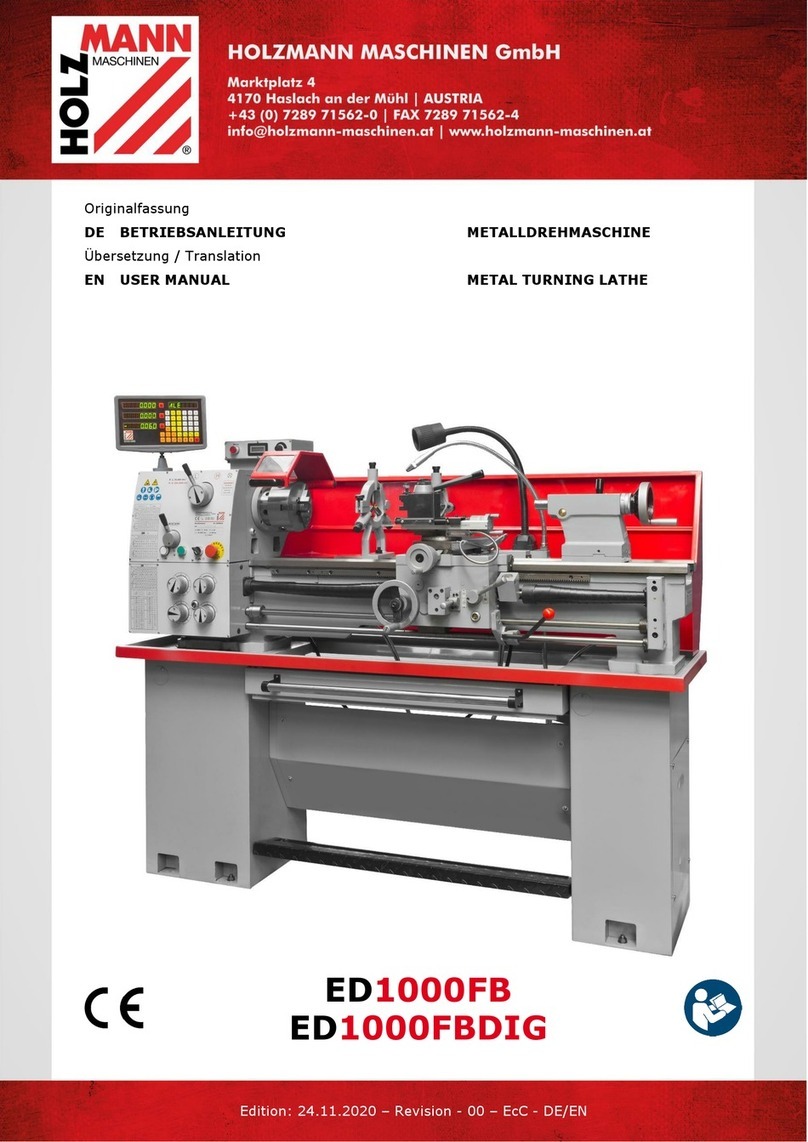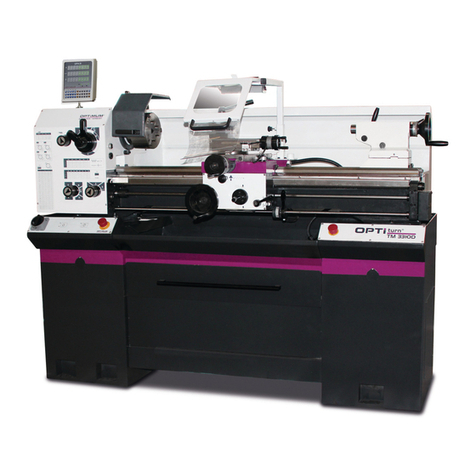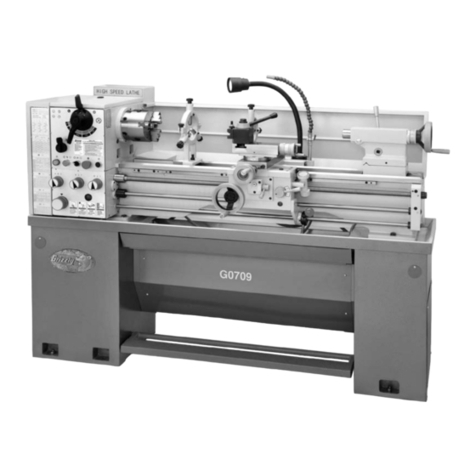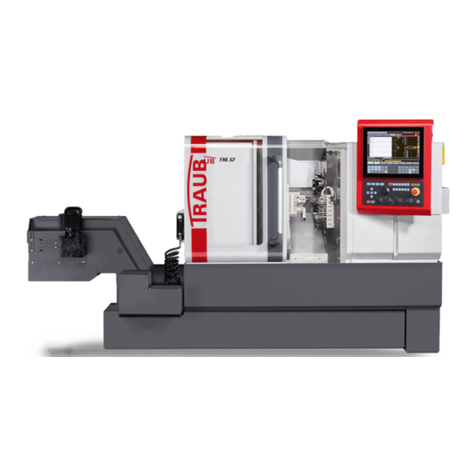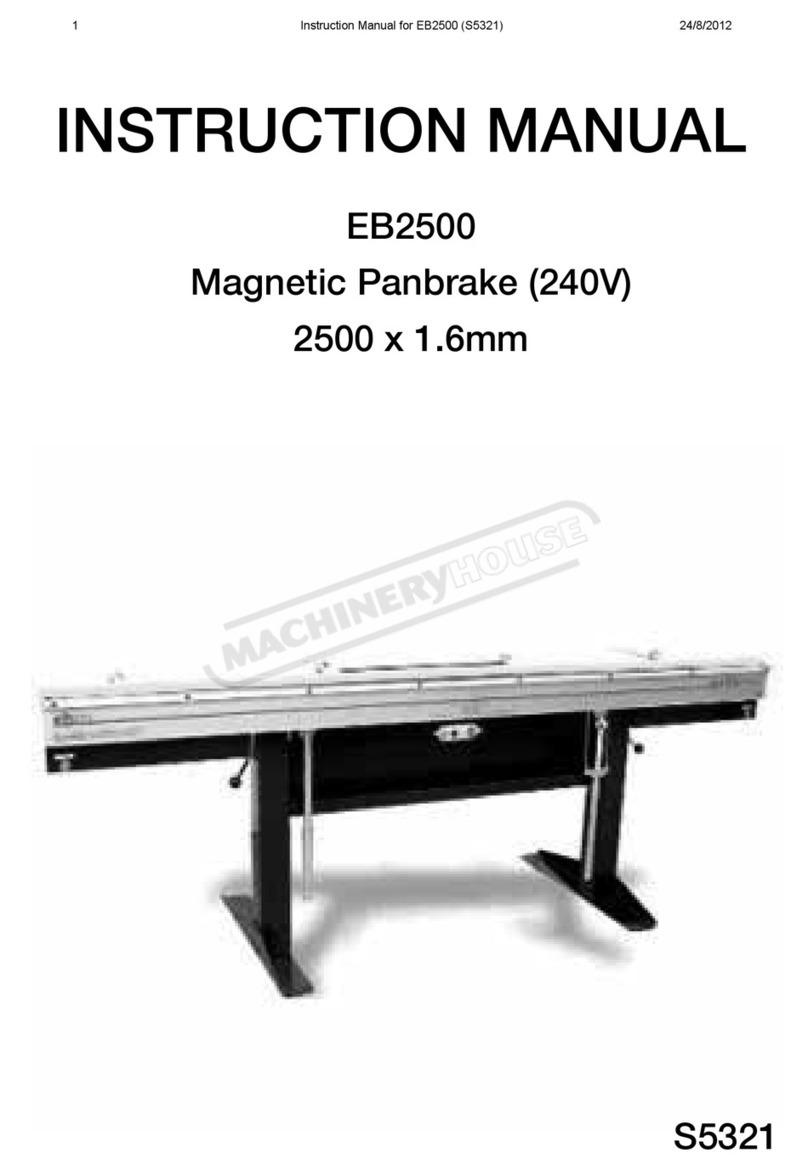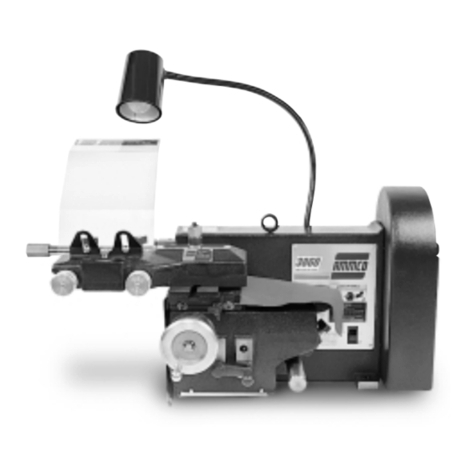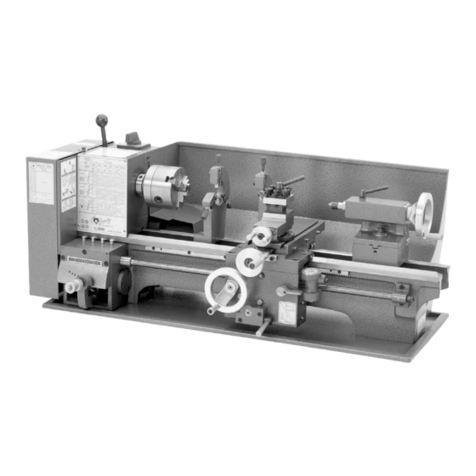1. FOR YOUR OWN SAFETY, READ THE
MANUAL BEFORE OPERATING THE TOOL.
Learn the machine’s application and limitations
plus the specific hazards peculiar to it.
2. ALWAYS USE A FULL FACE SHIELD (must
comply with ANSI STANDARD Z87.1 -USA)
Everyday eye-glasses usually are only impact
resistant and safety glasses only protect eyes. A
full face shield fill protect the eyes and face. Also
use face or dust mask if cutting operation is
dusty.
3. WEAR PROPER APPAREL. Do not wear loose
clothing, gloves, neckties, rings, bracelets or
other jewelry which may get caught in moving
parts. Non slip footwear is recommended. Wear
protective hair covering to contain long hair.
4. USE EAR PROTECTORS. Use ear muffs for
extended period of operation. Use muffs rated to
103 DBA LEQ (8 hour).
5. DON’T USE IN A DANGEROUS
ENVIRONMENT. Don’t use power tools in damp
or wet locations, or expose them to rain. Keep
work area well lighted. The Nova 1624/44 Lathe
is intended for indoor use only. Failure to do so
may void the warranty.
6. KEEP WORK AREA CLEAN. Cluttered areas
and benches invite accidents. Build up of
sawdust is a fire hazard.
7. KEEP CHILDREN AND VISITORS AWAY. All
children and visitors should be kept a safe
distance from work area.
8. MAKE WORKSHOP CHILDPROOF with locks,
master switches, or by removing starter keys.
9. GROUND ALL TOOLS. If the tool is equipped
with a three prong plug, it should be plugged into
a three-hole electrical receptacle. If an adapter is
used to accommodate a two prong receptacle,
the adapter lug must be attached to a known
ground. Never remove the third prong.
10. MAKE SURE TOOL IS DISCONNECTED
FROM POWER SUPPLY while the motor is
being mounted, connected, or reconnected.
11. DISCONNECT TOOLS before servicing and
when changing accessories such as blades, bits
cutters, etc.
12. AVOID ACCIDENTAL STARTING. Make sure
switch is in the Off position before plugging in
power cord.
13. NEVER LEAVE MACHINE RUNNING
UNATTENDED. Do not leave tool unless it is
turned off and has come to a complete stop.
14. KEEP GUARDS IN PLACE and in working order.
15. USE RIGHT TOOL. Do not use a tool or attachment to
do a job for which it was not designed.
16. USE RECOMMENDED ACCESSORIES. The use of
improper accessories may cause hazards.
17. DON’T FORCE TOOL. It will do the job better and be
safer at the rate for which it was designed.
18. MAINTAIN TOOLS IN TOP CONDITION. Keep tools
sharp and clean for best and safest performance.
Follow instructions for lubricating and changing
accessories.
19. NEVER STAND ON TOOL. Serious injury could occur
if the tool is tipped or if the cutting tool is accidentally
contacted.
20. REMOVE ADJUSTING KEYS AND WRENCHES.
Form a habit of checking to see that keys and adjusting
wrenches are removed from tool before turning it on.
21. DON’T OVERREACH. Keep proper footing and
balance at all times.
22. DIRECTION OF FEED. Feed work into a blade or
cutter against the direction of rotation of the blade or
cutter only.
23. ATTENTION TO WORK. Concentrate on your work. If
you become tired or frustrated, leave it for awhile and
rest.
24. SECURE WORK. Use clamps or a vice to hold work
when practical. It’s safer than using your hand and
frees both hands to operate tool.
25. CHECK DAMAGED PARTS. Before further use of the
tool, any part that is damaged should be carefully
checked to ensure that it will operate properly and
perform its intended function. Check for alignment of
moving parts, binding of moving parts, mounting, and
any other conditions that may affect its operation. Any
damaged part should be properly repaired or replaced.
26. DRUGS, ALCOHOL, MEDICATION. Do not operate
tool while under the influence of drugs, alcohol, or any
medication.
27. DUST WARNING. The dust generated by certain
woods and wood products can be injurious to your
health. Always operate machinery in well ventilated
areas and provide for proper dust removal. Use wood
dust collection systems whenever possible.
